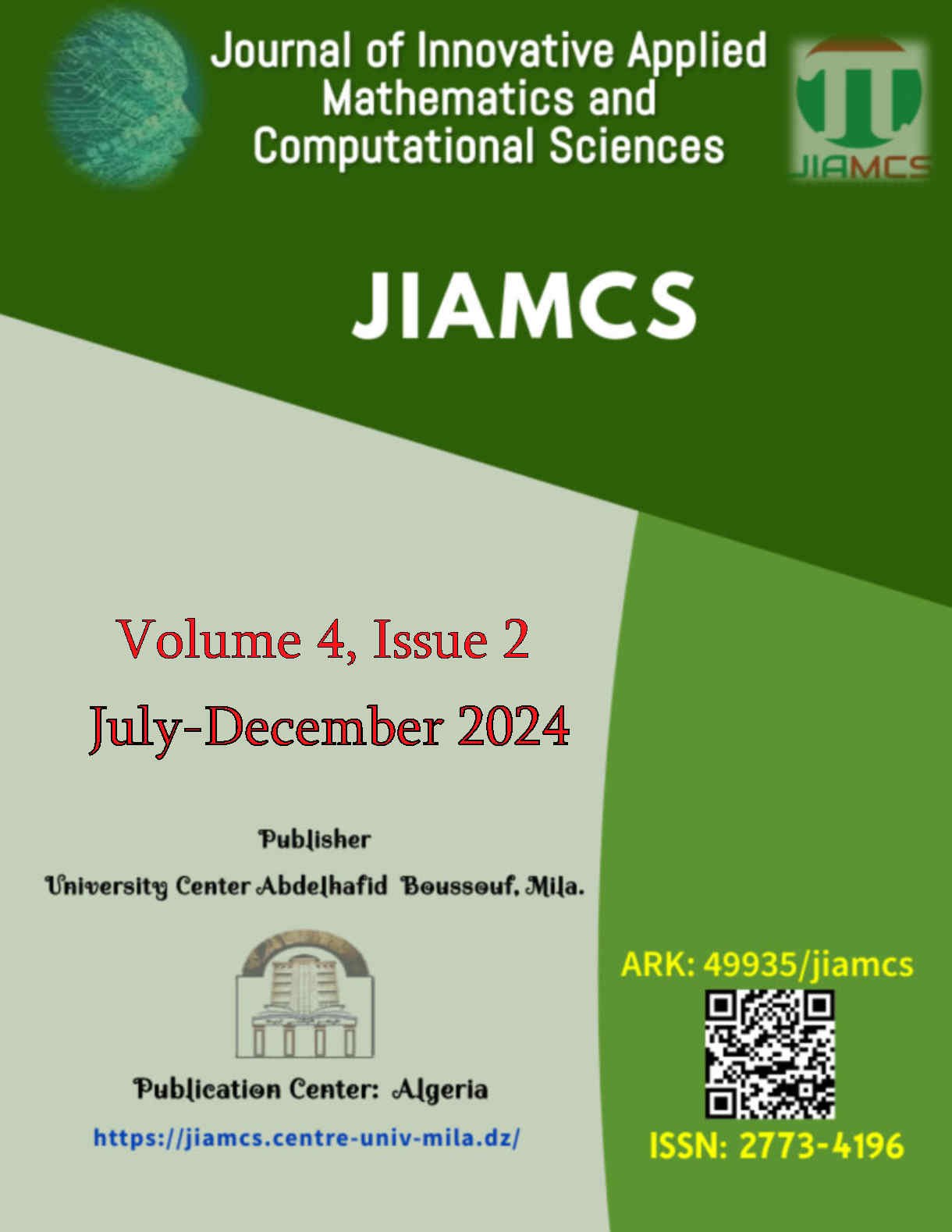Variance exchange process: overcoming the problem of singular information matrices in quadratic three−variable response designs
Main Article Content
Abstract
Many a time, in a variance exchange process looking for D-optimal designs, the initial designs of all quadratic components of three-variable response polynomials produce non-invertible information matrices. For such matrices, the variances of predicted responses at variance points cannot be evaluated, and the variance exchange process, not possible. D-optimality is a design criterion that seeks to maximize the determinant of the information matrix, or equivalently minimize the determinant of the inverse information matrix of the design. This work seeks to address the challenges posed by initial quadratic designs with zero-determinant information matrices for three-variable response polynomials to allow for the possibility of the variance exchange.
The singular value decomposition (SUV) method was adopted and an algorithm was constructed for a variance exchange process involving quadratic designs of threevariable response functions. The study considered generated data for quadratic threevariable designs of sizes 12 and 13 for the analysis. MATLAB 7.5.0 (R2007b) was used to obtain the Penrose inverses.
The results show that a variance exchange process was possible, evaluating the variances of the predicted responses at the design points, thereby overcoming the problem of singular information matrices on the initial quadratic designs.
The D-optimal designs, computer-generated optimal designs, provide ready alternatives for finding optimum conditions for factors in engineering optimization problems with response surface functions that require structured data collection using experimental design when the experimental design space is constrained owing to zero determinant of the information matrices of the initial designs.
Downloads
Article Details

This work is licensed under a Creative Commons Attribution-NonCommercial-NoDerivatives 4.0 International License.
- Authors keep the rights and guarantee the Journal of Innovative Applied Mathematics and Computational Sciences the right to be the first publication of the document, licensed under a Creative Commons Attribution-NonCommercial-NoDerivatives 4.0 International License that allows others to share the work with an acknowledgement of authorship and publication in the journal.
- Authors are allowed and encouraged to spread their work through electronic means using personal or institutional websites (institutional open archives, personal websites or professional and academic networks profiles) once the text has been published.
References
[1] L. Al Labadi, Some refinements on Fedorovs algorithms for constructing D-optimal designs, Brazilian Journal of Probability and Statistics, 29(1) (2015), 5370.
[2] J-S. Arora, Introduction to optimum design, Fourth Edition, Elsevier Inc., Iowa, 2017.
[3] A-C. Atkinson, A-N. Donev, Experimental designs optimally balanced for trend, Technometrics, 38 (1997), 333–341.
[4] A-C. Atkinson, A-N. Donev and R-D. Tobias, Optimum Experimental Designs, with SAS. Oxford University Press, New York, 2007.
[5] R Core Team, R: A language and environment for statistical computing, R Foundation for Statistical Computing, Vienna, Austria. 2021.
[6] P. Goos and B. Jones, Optimal design of experiments, a case study approach, John Wiley & Sons Ltd, United Kingdom, 2011.
[7] T-NE. Greville, Some applications of the pseudoinverse of a matrix, SIAM Review, 2 (1960), 15–22.
[8] O-I. Ikpan, and F-N Nwobi, Cycling in a Variance Exchange Algorithm: Its Influence and Remedy, Afrika Statistika, 8 (2021), 1227–1244.
[9] O-I. Ikpan, and F-N Nwobi, An improved algorithm for cycling discontinuity in a variance exchange process for D-optimal design, Unicross Journal of Science and Technology, 1 (2022), 183–200.
[10] O-I. Ikpan, and F-N. Nwobi, On the Difference in Cycling Pattern on Linear and Higher-Order Effect Designs, Asian Journal of Probability and Statistics, 23 (2023), 2638. DOI
[11] P-J. Olver and C. Shakiban, Applied Linear Algebra, Second Edition. Springer International Publishing AG, 2018.
[12] J-R. Schott, Matrix Analysis for Statistics, Third Edition, John Wiley & Sons, Inc., 2017.
[13] S-R. Searle and M-H. Gruber, Linear Models, Second Edition. John Wiley & Sons, Inc., Hoboken, New Jersey, 2017.
[14] I. Stanimirovic, Computation of Generalized Matrix Inverses and Applications, Apple Academic Press Inc., Canada, 2018.




